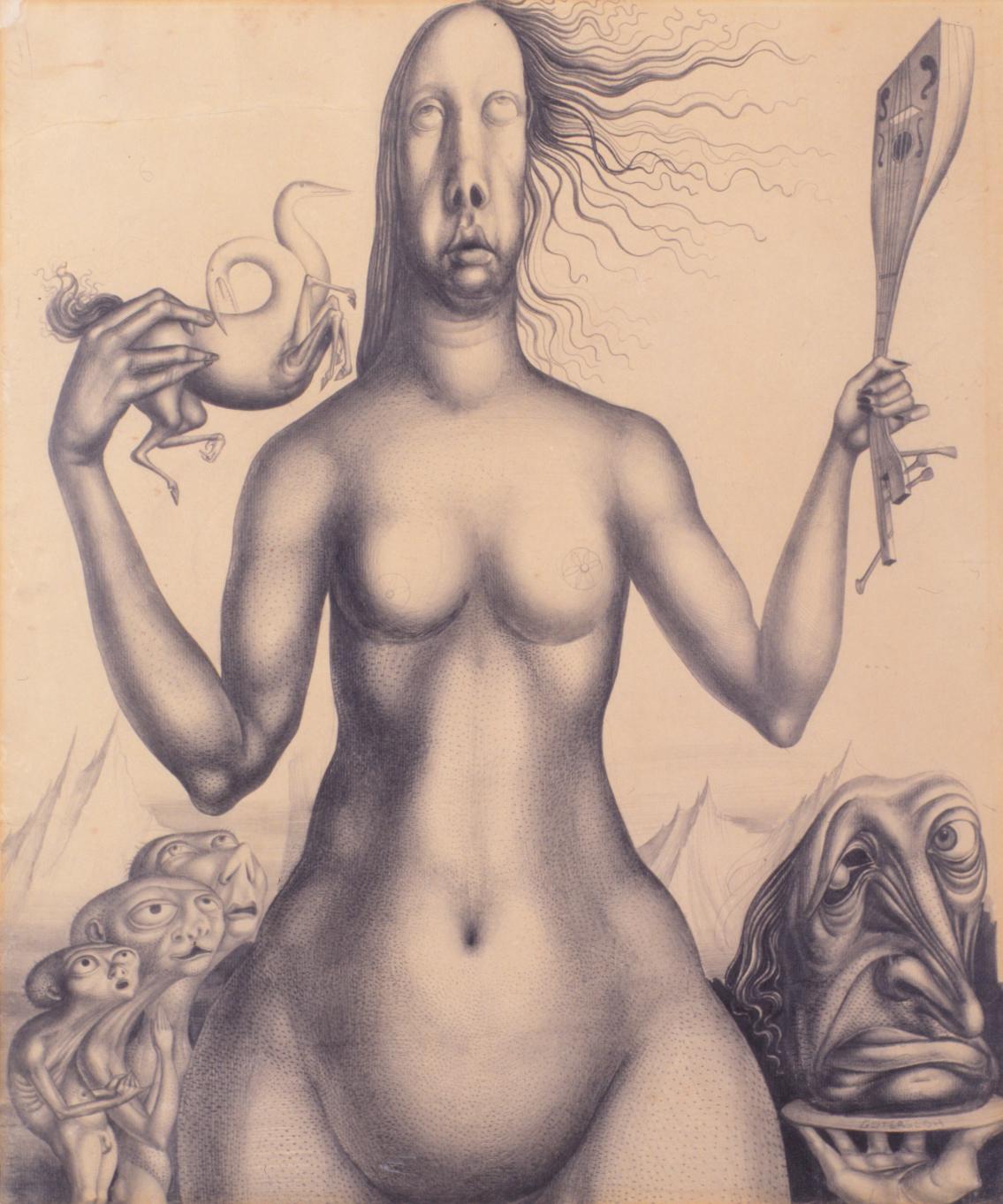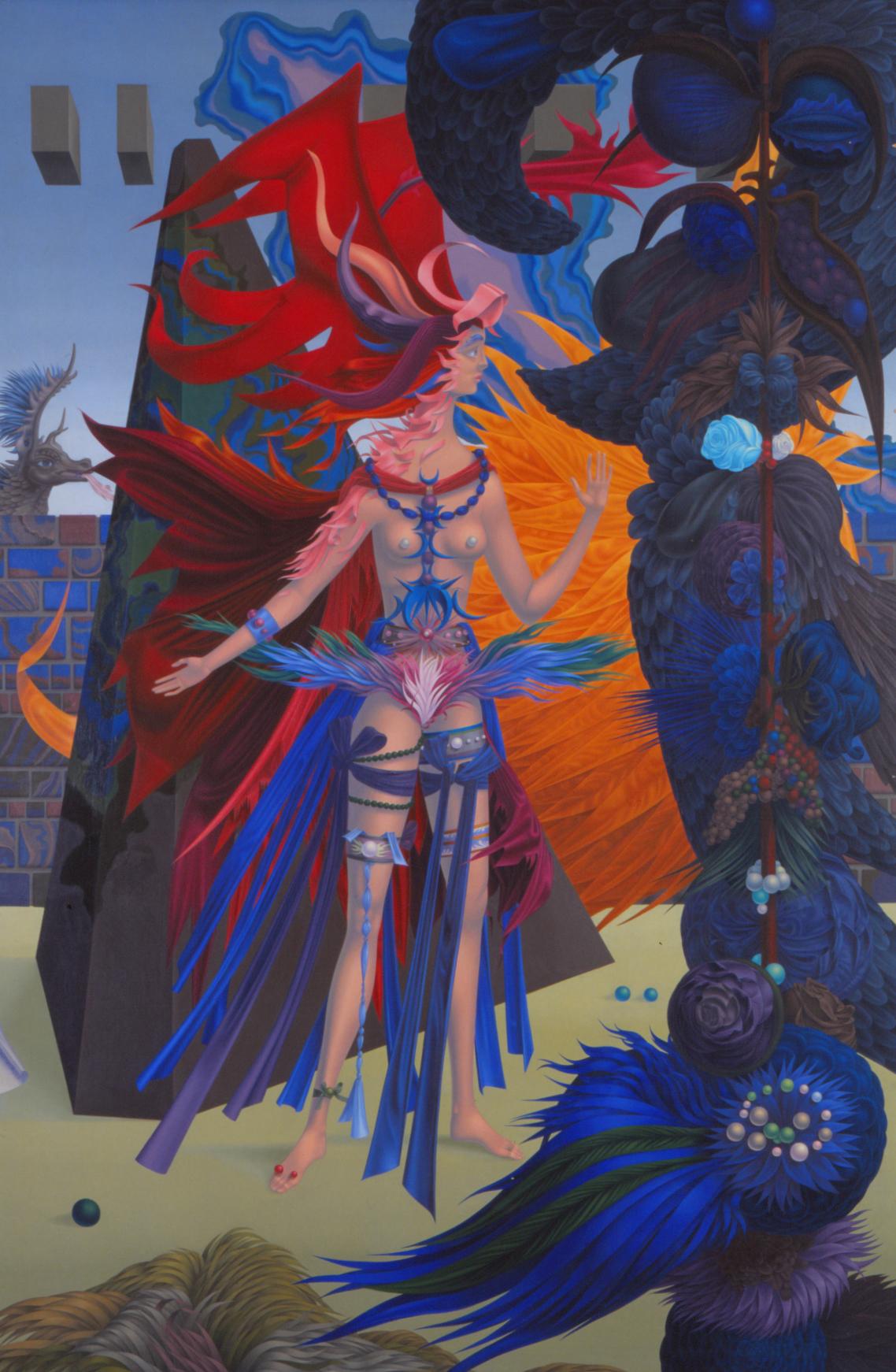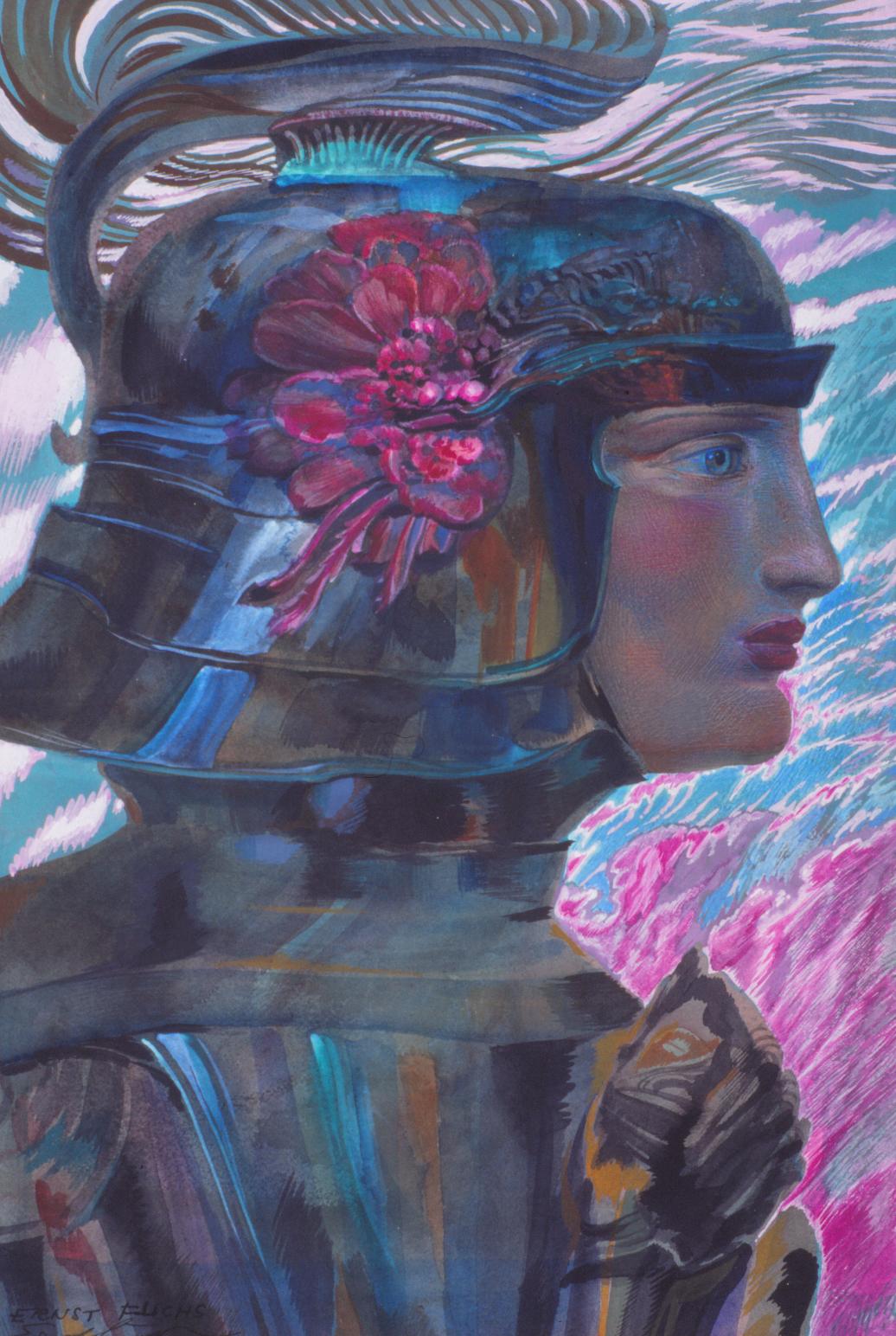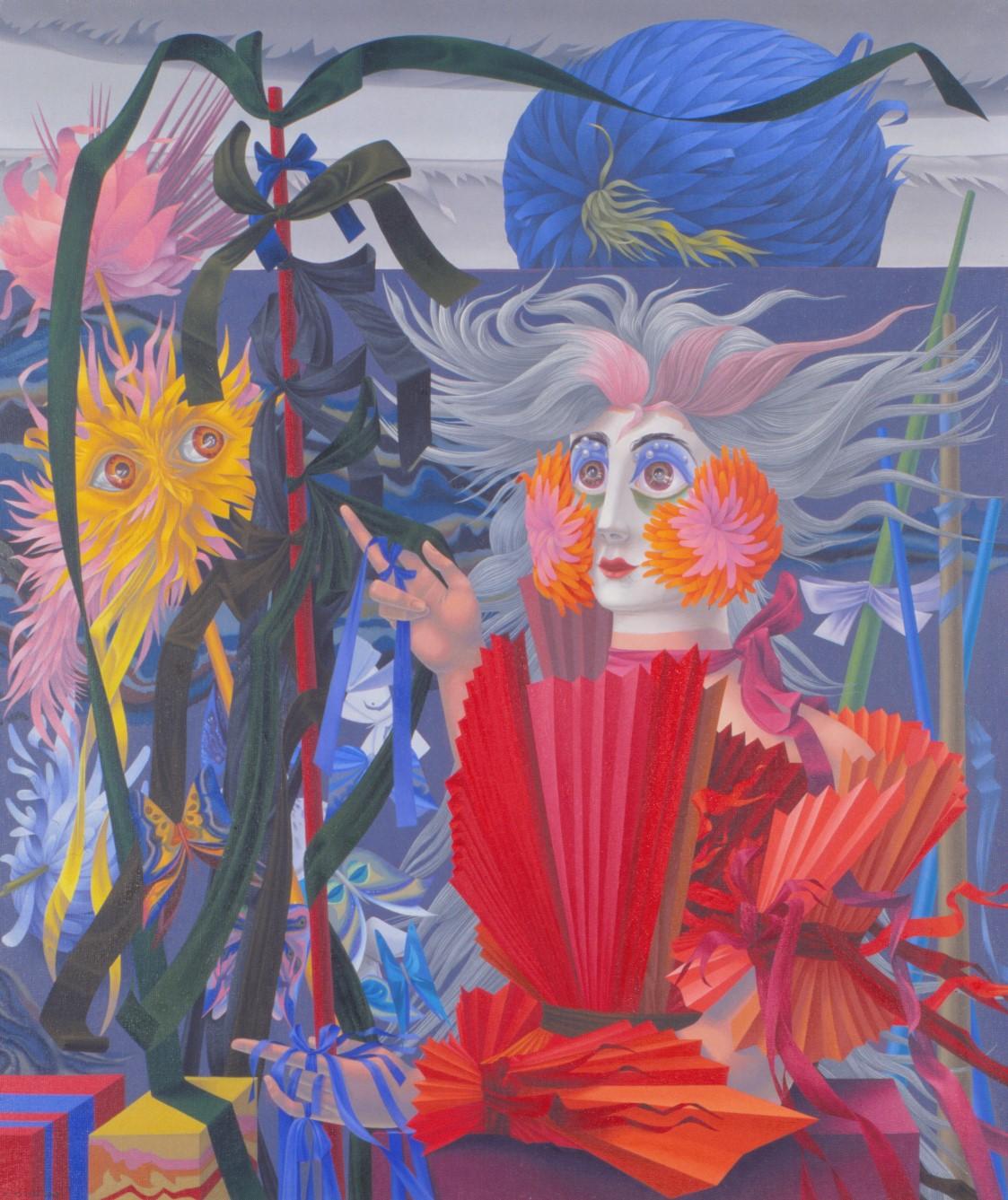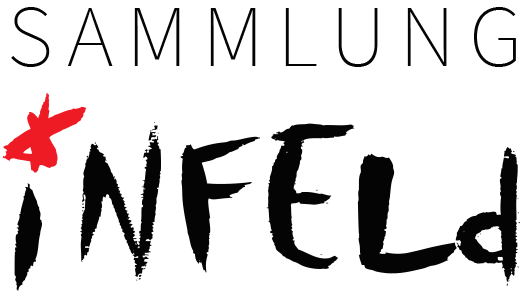Woman Power
The exhibition “Woman Power” in the Infeld Haus der Kultur in Halbturn brings together works of art, sculptures and sacred art objects. Created in Europe, Asia and Africa, the works show characteristic aspects of the representation of women in art.
How has the view of women changed over the decades in connection with the progressive detachment from traditional gender roles? The approximately 70 exhibited works by 34 artists that cover 100 years of art history offer suggestions for seeing and thinking about old ideas and patterns in a new way.
The show starts with artists from Vienna around 1900 such as Koloman Moser and Gustav Klimt with their refined presentations of female beauty, as well as the Tyrolean Alfons Walde with his women in traditional dresses. The fascination of the female body can be seen in the art works of the Croatian painter Edo Murtic, the filmmaker Kurt Stenvert and female positions such as Martha Jungwirth.
The works of the Viennese fantastic realists provide an exciting report on the daily journeys into one's own imagination in colours and shapes. One of them, Wolfgang Hutter (“Dragon’s Bride”, “The Sorceress”, “Plant Ballet”) is considered an “eye-voluptuary” and “attentive dreamer, a scenarist of secret desires and longings”. He completes his dream landscapes with female figures who have no concept of original sin and guilt. The works activate the eye and the imagination of the viewer. Ernst Fuchs (“Gütersloh and the Muse”), Arik Brauer (“Dancer in a Flower Skirt”) and Benedetto Fellin (“Veiled Muse”) continue the parcours with works from the Infeld Collection.
The exhibition places a particular emphasis on two works by Croatian artists that show women as powerful hybrid creatures. The painter Boris Bucan (1947-2023) designed the poster for “Firebird”, the ballet by Igor Stravinsky in the Croatian National Theater in Split in 1982. The work became a recognizable motive in contemporary Croatian culture. Boris Bucan's “Firebird”, painted with oil on canvas, is part of the exhibition.
The “Cat” by the sculptor and painter Marija Ujevic is one of the most beautiful Mannerist sculptures in contemporary Croatian art. Once you have seen it, you will never forget it: the female body is heavily twisted and has no arms, the cat's head has no facial features.
Another focus of the show are African figures. With its strong expressiveness and design language, traditional African art fascinated and inspired artists like Pablo Picasso at the beginning of the 20th century. The female figures are a combination of form, origin and meaning, they open a gate into a strange and fascinating world full of traditions, mysterious rituals, and lived spirituality.
Created exclusively in a religious or social context, the figures were often the object of adoration and veneration, used in communication with the ancestral world and in the fulfilment of wishes. This spiritual element explains their powerful, magical charisma. African cult objects are seen as art in the aesthetic sense by the Western world at the beginning of the 20th century.
Meditation paintings from Tibet (so-called “Thangkas”) and musical instruments such as the violin, whose shape imitates the female figure and was considered as a symbol of the female body in the Dutch Baroque period, viola, viola d'amore, and guitar round off the exhibition.
The Infeld collection
Peter Infeld (1942-2009) and his mother Margaretha Infeld (1904-1994) began to collect art in the mid-1960s.
The Vienna School of Fantastic Realism, naive art from Croatia, Pop Art, Buddhist meditation paintings from Tibet (so-called "Thangkas") and Art Brut are the main focus of the Infeld collection.
In order to make the works accessible to a broader public, patron of arts Peter Infeld, has built representative cultural centers in Halbturn in Burgenland and in the idyllic village of Dobrinj on the Croatian island of Krk. In total, more than 120 exhibitions were held free of charge at both locations.
The company Thomastik-Infeld GmbH
The traditional Viennese company Thomastik-Infeld is one of the three most important string producers worldwide. The company produces around 3000 different strings and is the world market leader in some areas. The strings have been handmade.
Founded in 1919, the company had 20 employees after the Second World War. To date, this number has increased tenfold. Exports go to more than 95 countries. Following the death of Peter Infeld in 2009, his widow, Croatian-born Zdenka Infeld, continues the family's long business and art collecting tradition.
Exhibition dates
Duration: The exhibition "Woman Power” can be seen from March 09 to December 08, 2024.
Venue: Infeld Haus der Kultur, Parkstraße 13, 7131 Halbturn / Burgenland
Opening hours: Thu-Sun 1 pm to 6 pm, as well as on public holidays
Free admission
Works: approximately 70 oil and acrylic paintings, watercolors, drawings, sculptures and music instruments
Artists: Christian Ludwig Attersee, Camille Bombois, Fernando Botero, Josef Bramer, Arik Brauer, Günter Brus, Boris Bucan, Niki de Saint Phalle, Leonor Fini, Ernst Fuchs, Albert Paris Gütersloh, Krsto Hegedusic, Nikolaus Heinrich, Friedenreich Hundertwasser, Wolfgang Hut-ter, Benedetto Fellin, Josip Vasilije Jordan, Martha Jungwirth, Gustav Klimt, Karl Korab, Nives Kauric Kurtovic, Yves Laloy, Joachim Luetke, Alfred Mieses, Koloman Moser, Edo Murtic, James Rizzi, Curt Stenvert, Franz Ringel, Walter Schmögner, Ludwig Schwarzer, Marija U-jevic, Alfons Walde, Robert Zeppel-Sperl
Inquiries:
Dr. Yordanka Weiss
Curator of the Infeld collection
Mobile: + 43 664 465 66 66
Phone: + 43 1 545 80 46
Email: [email protected]
www.infeld.net
Press Photos
